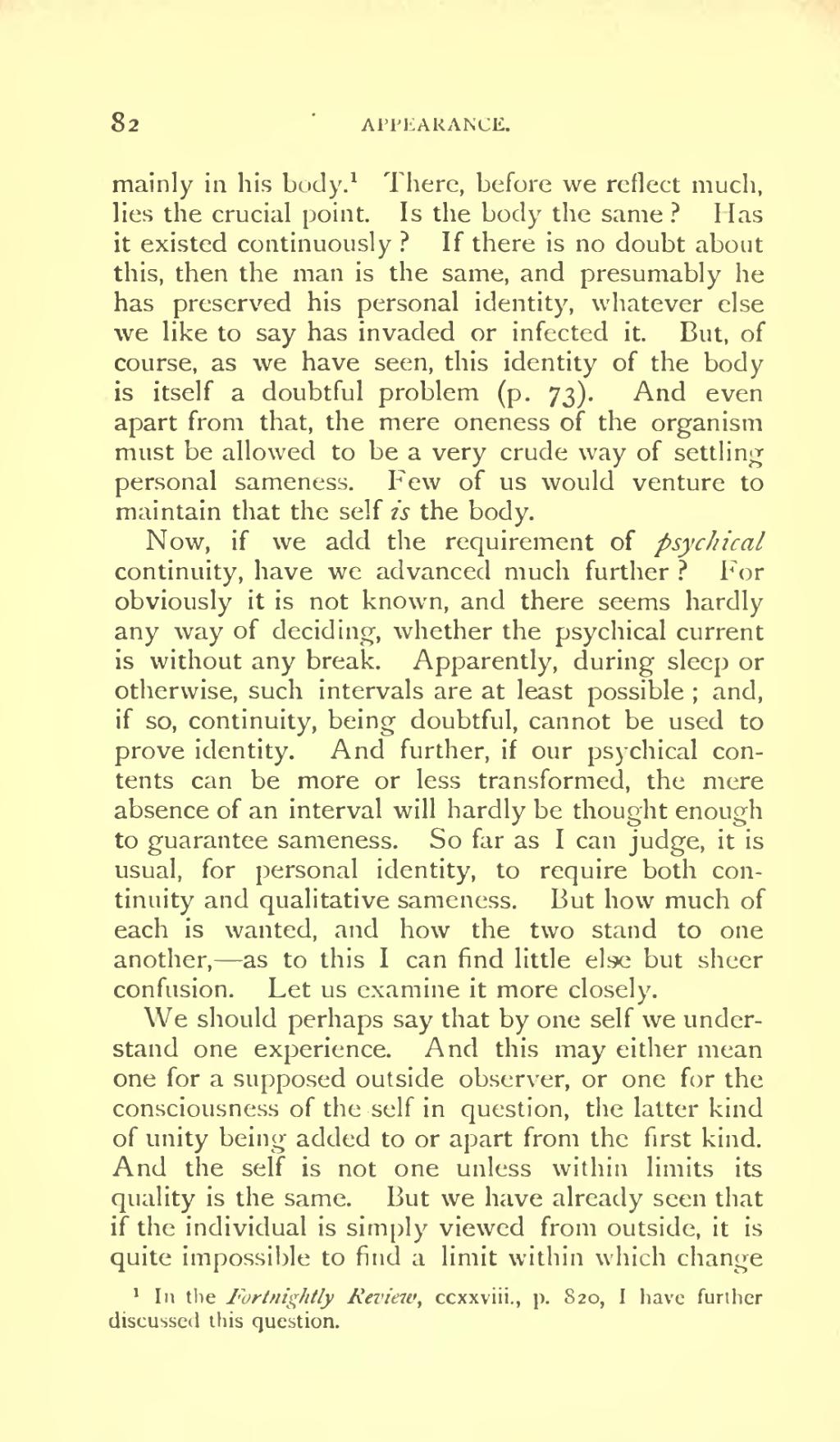mainly in his body.[1] There, before we reflect much, lies the crucial point. Is the body the same? Has it existed continuously? If there is no doubt about this, then the man is the same, and presumably he has preserved his personal identity, whatever else we like to say has invaded or infected it. But, of course, as we have seen, this identity of the body is itself a doubtful problem (p. 73). And even apart from that, the mere oneness of the organism must be allowed to be a very crude way of settling personal sameness. Few of us would venture to maintain that the self is the body.
Now, if we add the requirement of psychical continuity, have we advanced much further? For obviously it is not known, and there seems hardly any way of deciding, whether the psychical current is without any break. Apparently, during sleep or otherwise, such intervals are at least possible; and, if so, continuity, being doubtful, cannot be used to prove identity. And further, if our psychical contents can be more or less transformed, the mere absence of an interval will hardly be thought enough to guarantee sameness. So far as I can judge, it is usual, for personal identity, to require both continuity and qualitative sameness. But how much of each is wanted, and how the two stand to one another,—as to this I can find little else but sheer confusion. Let us examine it more closely.
We should perhaps say that by one self we understand one experience. And this may either mean one for a supposed outside observer, or one for the consciousness of the self in question, the latter kind of unity being added to or apart from the first kind. And the self is not one unless within limits its quality is the same. But we have already seen that if the individual is simply viewed from outside, it is quite impossible to find a limit within which change
- ↑ In the Fortnightly Review, ccxxviii., p. 820, I have further discussed this question.
